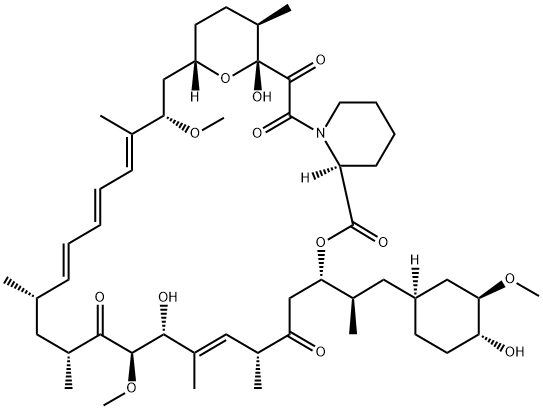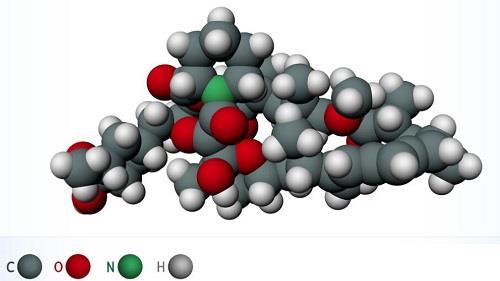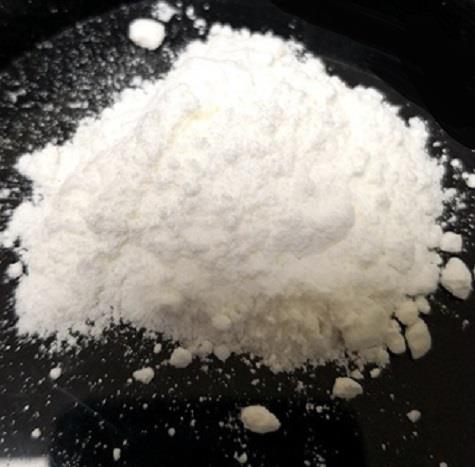What is Rapamycin?
Feb 10,2020
Sirolimus, also known as rapamycin, is a macrolide derived from Streptomyces hygroscopicus. Sirolimus and its analog molecules, the so called ‘rapalogs’, belong to the inhibitors of the mammalian target of rapamycin (mTOR).
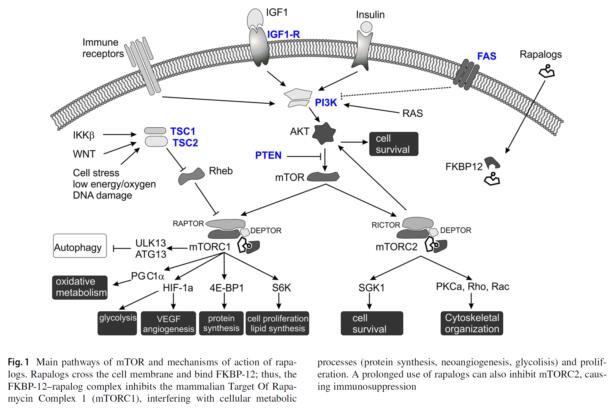
mTOR is a serine-threonine kinase involved in cellular proliferation and metabolism that can be activated by various triggers, such as growth factors (IGF-1 among others) and amino acids, stimulating the PI3K-Akt–mTOR pathway. Sirolimus action is directed mainly towards mTORC1. After crossing the cellular membrane, it binds a cytosolic protein called FKBP-12, preventing it from activating mTORC1. This interference inhibits cellular growth, interrupting its transition from phase G1 to phase S. Ultimately, the action on mTORC1 is responsible for the beneficial effects of the drug on cellular proliferation. However, although sirolimus cannot directly inhibit mTORC2, it was shown that its prolonged use can reduce mTORC2 activity as well. Effects of sirolimus arising from inhibition of mTORC2 include immunosuppression (affecting both T and B cells) and glucose intolerance, possibly leading to new-onset diabetes mellitus. [2]
As an mTOR inhibitor, sirolimus has a broad spectrum of activity that has demonstrated the ability to inhibit inflammation, proliferation, angiogenesis, fibrosis, and hyperpermeability. Sirolimus currently has multiple uses in the prevention of rejection in organ transplantation and, recently, in the treatment of advanced renal cell carcinoma. Sirolimus-eluting cardiac stents have been shown to limit the rate of overgrowth of tissue and thus prevent coronary restenosis. Early studies suggest that it may be an effective agent for controlling severe uveitis and that it may also have a role in treating agerelated macular degeneration. [3]
Sirolimus pharmacokinetics display large inter- and intrapatient variability, which may change in specific patient populations due to disease states or concurrent immunosuppressants or other interacting drugs. Due to the long half-life of sirolimus, dosage adjustments would ideally be based on trough levels obtained more than 5–7 days after initiation of therapy or dosage change. [4]
Food and Drug Administration (FDA) and European Medical Agency (EMA) approval of sirolimus to prevent rejection of transplanted kidney in children older than 13 years dates to 1999.
References
1.Millner L, Rodriguez C, Jortani SA. A clinical approach to solving discrepancies in therapeutic drug monitoring results for patients on sirolimus or tacrolimus: towards personalized medicine, immunosuppression and pharmacogenomics[J]. Clin Chim Acta. 2015, 23(450):15–8.
2.Calne RY, Collier DS, Lim S, Pollard SG, Samaan A, White DJ, et al. Rapamycin for immunosuppression in organ allografting[J]. Lancet. 1989, 2(8656):227
3.Cayrol J, Garrido Colino C. Use of sirolimus (rapamycin) for treatment of cytopenias and lymphoproliferation linked to autoimmune lymphoproliferative syndrome (ALPS). Two case reports[J]. J Pediatr Hematol Oncol. 2017, 39(4):e187–90.
West HJ. Novel precision medicine trial designs: umbrellas and baskets[J]. JAMA Oncol. 2017, 3(3):423.
);
You may like
The introduction of Metyltetraprole
Feb 5, 2024
Fluxapyroxad: Synthesis and Introduction
Jan 31, 2024
Related articles And Qustion
Lastest Price from Rapamycin manufacturers
Rapamycin

US $43.00-35.00/grams2024-04-24
- CAS:
- 53123-88-9
- Min. Order:
- 10grams
- Purity:
- 99%
- Supply Ability:
- 100tons
Rapamycin
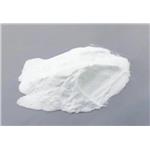
US $0.00/kg2024-04-18
- CAS:
- 53123-88-9
- Min. Order:
- 1kg
- Purity:
- 99%
- Supply Ability:
- 20tons
